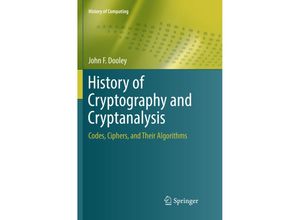This accessible textbook presents a fascinating review of cryptography and cryptanalysis across
history. The text relates the earliest use of the monoalphabetic cipher in the ancient world
the development of the unbreakable Vigenère cipher and an account of how cryptology entered
the arsenal of military intelligence during the American Revolutionary War. Moving on to the
American Civil War the book explains how the Union solved the Vigenère ciphers used by the
Confederates before investigating the development of cipher machines throughout World War I
and II. This is then followed by an exploration of cryptology in the computer age from
public-key cryptography and web security to criminal cyber-attacks and cyber-warfare. Looking
to the future the role of cryptography in the Internet of Things is also discussed along with
the potential impact of quantum computing.Topics and features: presents a history of cryptology
from ancient Rome to the present day with a focus on cryptology in the 20th and 21st centuries
reviews the different types of cryptographic algorithms used to create secret messages and the
various methods for breaking such secret messages provides engaging examples throughout the
book illustrating the use of cryptographic algorithms in different historical periods
describes the notable contributions to cryptology of Herbert Yardley William and Elizebeth
Smith Friedman Lester Hill Agnes Meyer Driscoll and Claude Shannon concludes with a review
of tantalizing unsolved mysteries in cryptology such as the Voynich Manuscript the Beale
Ciphers and the Kryptos sculpture. This engaging work is ideal as both a primary text for
courses on the history of cryptology and as a supplementary text for advanced undergraduate
courses on computer security. No prior background in mathematics is assumed beyond what would
be encountered in an introductory course on discrete mathematics.

